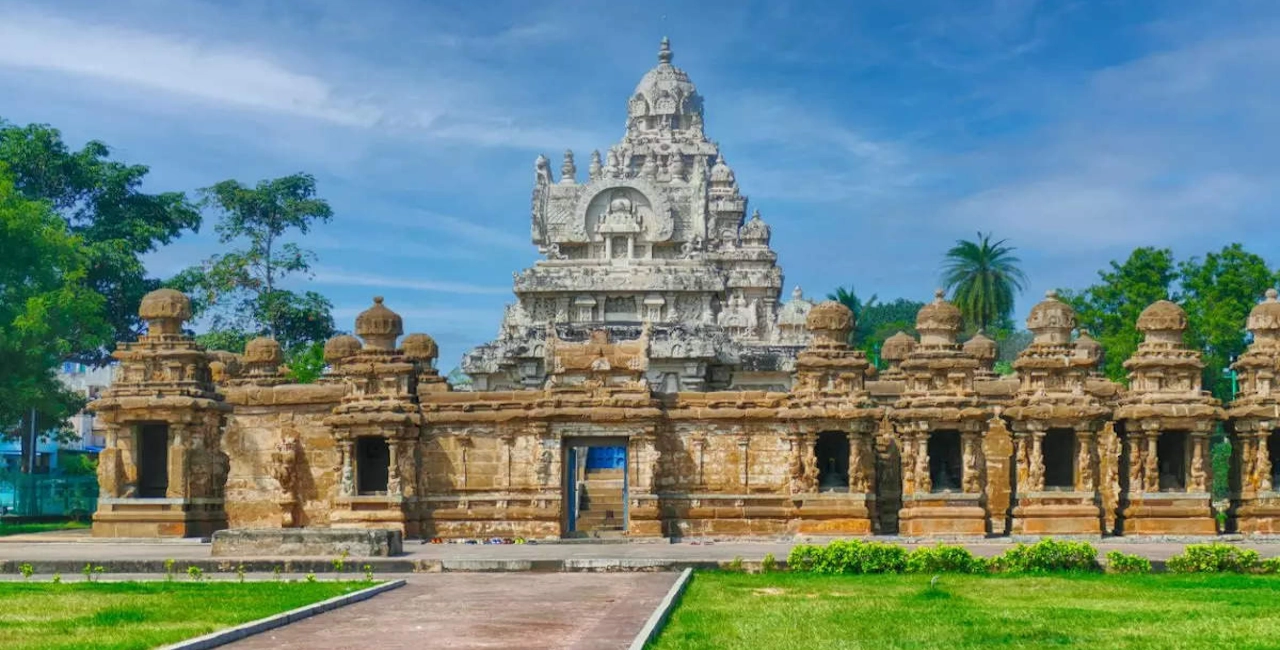Kanchipuram, often referred to as the “City of Temples,” is a vibrant historical city in Tamil Nadu, India. This ancient city is one of the seven sacred pilgrimage sites in Hinduism and is known not only for its grand temples and architectural wonders but also for its renowned Kanchipuram silk sarees. With a rich heritage that spans thousands of years, Kanchipuram is a cultural and spiritual hub that attracts visitors from around the world.
A Brief History of Kanchipuram
Kanchipuram has a storied past that dates back to the Pallava dynasty in the 4th century. It served as an important capital and cultural center for various dynasties, including the Cholas, Vijayanagara Empire, and later the British. Throughout history, it was known as a center of education, religion, and art, attracting scholars and students from across the subcontinent. Its association with Hinduism, Buddhism, and Jainism has made it a significant religious site for centuries.
Today, Kanchipuram’s heritage is celebrated through its temples, vibrant festivals, and age-old weaving traditions, making it a must-visit destination for travelers interested in India’s cultural history.
The Temples of Kanchipuram
Kanchipuram is famous for its exquisite temples, many of which were constructed by the Pallava, Chola, and Vijayanagara kings. The city is divided into two sections, each dedicated to different Hindu deities: Vishnu Kanchi, which houses temples for Lord Vishnu, and Shiva Kanchi, which is dedicated to Lord Shiva. Each temple is an architectural masterpiece, showcasing intricate carvings, towering gopurams (entrance towers), and beautiful sculptures.
- Kailasanathar Temple: Built by the Pallava king Narasimhavarman II in the 7th century, Kailasanathar Temple is one of Kanchipuram’s oldest temples. This Shiva temple is renowned for its unique Dravidian architecture, including detailed carvings of gods, goddesses, and celestial beings. Its impressive sandstone structure and sprawling complex make it a favorite among history and architecture enthusiasts.
- Ekambareswarar Temple: This is one of the largest temples in Kanchipuram and is dedicated to Lord Shiva. The temple is known for its 11-story gopuram, which stands at 59 meters and is one of the tallest in South India. Ekambareswarar Temple is famous for its “Aayiram Kaal Mandapam,” or the Hall of a Thousand Pillars, as well as its ancient mango tree, believed to be over 3,500 years old, under which devotees pray for blessings.
- Varadharaja Perumal Temple: Dedicated to Lord Vishnu, this temple is a significant pilgrimage site for Vaishnavites. Built by the Cholas in the 10th century, it showcases an intricate architectural style and is known for its 100-pillar hall, adorned with sculptures depicting stories from Hindu mythology. The annual Brahmotsavam festival held here attracts a large number of devotees.
- Kamakshi Amman Temple: This famous temple dedicated to Goddess Kamakshi, an incarnation of Goddess Parvati, is a revered site for Shakti worshippers. The temple’s sanctum houses the goddess in a seated posture, symbolizing peace. The temple complex is a blend of Tamil and Dravidian architectural styles and hosts the annual Panguni Uthiram festival, drawing crowds from across Tamil Nadu.
Kanchipuram Silk: The Weaving Legacy
Kanchipuram is synonymous with silk sarees, which are renowned for their richness, durability, and traditional patterns. Kanchipuram silk sarees are made from pure mulberry silk and have an unmistakable sheen. The weavers use a unique weaving technique that incorporates zari (gold or silver thread) to create traditional designs inspired by temples, nature, and mythology.
The history of Kanchipuram silk weaving is believed to go back more than 400 years, originating during the reign of the Vijayanagara kings who invited weavers to settle in the city. Today, Kanchipuram silk sarees are highly prized and often worn for weddings, festivals, and religious ceremonies. Each saree is a work of art, taking several days to complete, and is cherished for its intricate patterns, vibrant colors, and high-quality craftsmanship.
Festivals and Celebrations
Kanchipuram is known for its lively festivals that celebrate the city’s religious and cultural heritage. Some of the prominent festivals include:
- Brahmotsavam: This grand festival is celebrated in most of Kanchipuram’s temples, especially the Varadharaja Perumal Temple. Held over ten days, it includes elaborate processions, traditional music, and devotional ceremonies.
- Panguni Uthiram: Celebrated at the Kamakshi Amman Temple, this festival is dedicated to the goddess Kamakshi and is one of the most colorful events in the city. Devotees gather in large numbers, and the festival is marked by vibrant processions and traditional dances.
- Mahashivaratri: As a prominent Shaiva site, Kanchipuram celebrates Mahashivaratri with special prayers, rituals, and festivities, especially at the Ekambareswarar Temple. Devotees stay awake through the night, chanting hymns in honor of Lord Shiva.
How to Reach Kanchipuram
Kanchipuram is well-connected to other major cities in Tamil Nadu and South India. The nearest major city is Chennai, about 72 kilometers away, making it accessible for day trips. Regular bus services connect Kanchipuram to Chennai, Bengaluru, and other cities in Tamil Nadu. The Kanchipuram Railway Station is also connected to major rail routes, and the nearest airport is Chennai International Airport.
Conclusion
Kanchipuram is a city where history, spirituality, and culture converge, offering a unique glimpse into Tamil Nadu’s glorious past. Whether you’re drawn to its magnificent temples, its vibrant festivals, or its exquisite silk sarees, Kanchipuram is a city that leaves a lasting impression. A journey through Kanchipuram is a journey through time, where every corner and temple tells a story of devotion, artistry, and tradition. For travelers, pilgrims, and art enthusiasts alike, Kanchipuram remains a timeless destination that embodies the soul of South India.


0 Comment